The 2014 Net Positive Energy and Water Conference took place this February in San Francisco, California. Organized by the International Living Future Institute (ILFI), the conference brought together more than 350 passionate attendees concerned with making the world a healthier and more sustainable place to live. The conference started with an optional tour to two green building projects either in the East Bay or San Francisco. I participated in the walking tour of the San Francisco Public Utilities Commission (SFPUC) Headquarters and the Exploratorium, both at the forefront of incorporating revolutionary green technology. Key members with intimate knowledge of each building from both project teams graciously lent their time to guiding the tour.
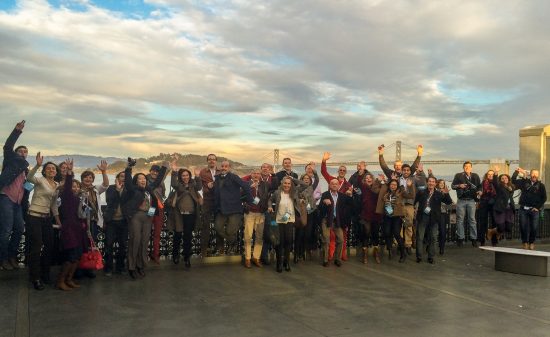
The LEED Platinum SFPUC Headquarters, designed by KMD Architects, was an eye opener. Its most exciting and game changing feature is its Living Machine, an advanced ecological engineering system involving tidal flow wetlands, that treats the building’s greywater and blackwater (essentially wastewater) and recycles it for toilet and urinal flushing. The Living Machine treats 5,000 gallons of wastewater per day, thereby providing the building an alternate source of water to potable water (essentially virgin water), and consequently enables a 5-gallon per person daily potable water consumption rate instead of a 12-gallon consumption rate typical of similarly sized buildings.
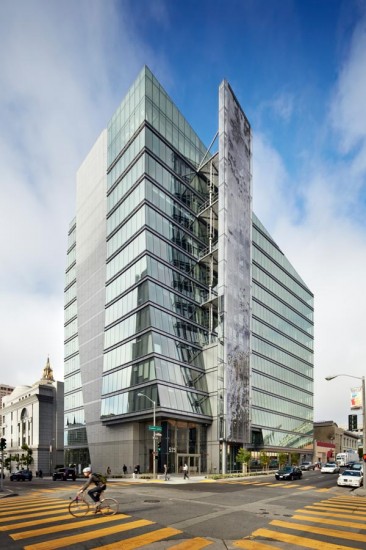
The Living Machine concept is attributed to Dr. John Todd who invented the revolutionary ecological wastewater treatment system in 1989. Twenty plus years later, the implementation of this type of wastewater treatment system in San Francisco was made possible by a 2012 ordinance adopted by the San Francisco Board of Supervisors to amend the city’s Health Code to establish permitting requirements for the use of alternate water sources for non-potable applications. In October 2013, the ordinance was amended to allow for buildings in San Francisco to share treated alternate water sources such as blackwater for non-potable applications. In light of the current drought conditions in California, it is befitting that SFPUC, the entity responsible for bringing potable water to the people of San Francisco, took a courageous step in utilizing a radical wastewater treatment technology in its new headquarters.
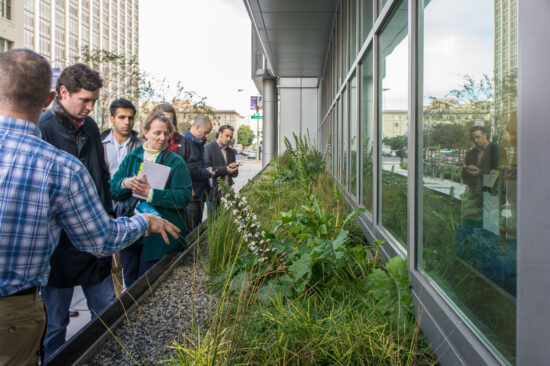
The second project on the tour was the Exploratorium, which was designed by EHDD and received its LEED Platinum in December of 2013. It is on target for achieving net zero energy usage and on its way to becoming the largest net zero energy-museum in the United States, if not the world. It is also the first building in San Francisco to circulate Bay water through its heat exchanger for the radiant floor heating and cooling system. Our tour was led by an engineer, Ms. Christina Liebner from Integral Group, the engineering firm responsible for designing the systems to help the building reach its net zero energy goal. One of Ms. Liebner’s responsibilities include overseeing the measurement and verification process at the museum, and thus she gave us good insight into how the engineers and staff members went about measuring, verifying, and improving energy usage in the Exploratorium.
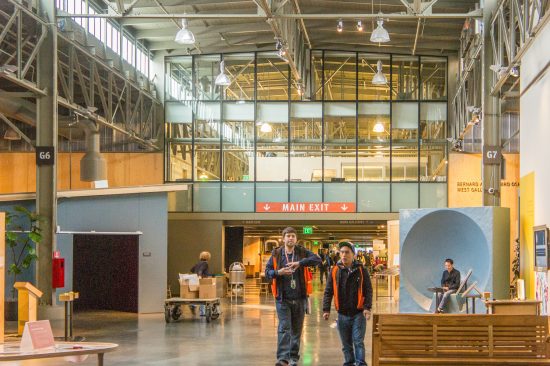
She also shared with us the important fact that every staff member really cares about achieving the net zero energy target. Facility management members are well trained, very engaged in the operations, and eager to analyze energy usage trends in order to understand the building. All electrical loads in the museum are individually monitored via subpanels. This allows the engineers and staff to analyze the data, understand which loads are going against design intentions, and make design changes. Plug load analysis was conducted for each museum exhibit display. The top ten exhibits consuming the most energy were identified and their designers went back to the drawing board to redesign the exhibit in order to reduce the energy usage. The Exploratorium’s efforts show us how critical it is for the process of measurement and verification be integrated into the daily and long term operations and maintenance process, and integral to the upkeep of a net zero energy building certification.

During the opening keynote session, Ms. Amanda Sturgeon, FAIA, Vice President of International Living Future Institute started it off with an image of the current US Drought Monitor map showing extreme and exceptional drought levels throughout California, parts of Nevada, and the southwest quadrant of the US including Texas; very apropos as to why the conference focused on how “net positive” energy and water buildings could be achieved. She stressed the significance of this dire fact, and how current drought conditions could inform our work and conversations. But she also shared her optimism:
We want to talk about abundance, regeneration, and hope; and how a net positive world is possible.

Following her welcome remarks, Ms. Sturgeon introduced keynote speaker, Mr. Denis Hayes, President and CEO of the Bullitt Foundation in Seattle, Washington, also known as Mr. Earth Day, the Founder of Earth Day and Board Chair of the Earth Day Network. Mr. Hayes talked about how the current trend of urban migration throughout the world would increase the need for new buildings to house the migrants, and consequently the opportunities not to be missed in creating net positive buildings that minimize their impacts on existing resources and infrastructure.
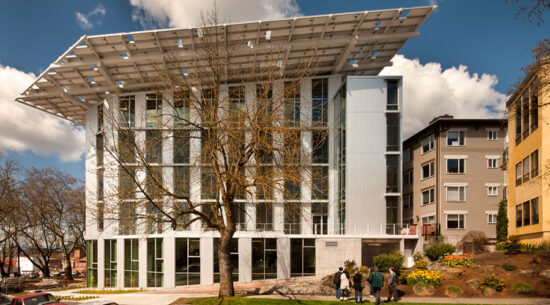
With the newly built and super green Bullitt Center, Mr. Hayes and the Bullitt Foundation lead by example in minimizing their impact on the environment, and as Mr. Hayes said,
creating a model for others, letting others know that this is very do-able, and trying to accelerate the pace of change by showing what’s possible today.
The Bullitt Center in Seattle is a six-story wood structure ecosystem in an urban environment that has accomplished the following:
- It is the first public building in the U.S. to harvest rainwater and convert it to potable drinking water.
- It is the first office building in an American city to treat wastewater from sinks and showers via a greywater tank and constructed wetland, and then send the clean water back into the soil via bioswales.
- It treats six floors of waterless composting toilets via composting systems in the basement.
- It produces its own renewable energy.
- It is the first commercial building in the U.S. to obtain FSC Project Certification from the Forest Stewardship Council (FSC).
- It is on its way to becoming the first commercial office building in the U.S. to be certified by the Living Building Challenge Program.
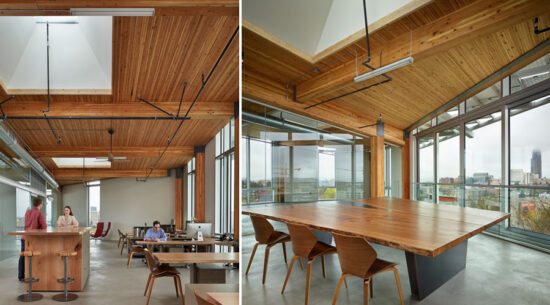
The second day of the Net Positive Energy and Water Conference started off with a keynote by Mr. Jason McLennan, creator of the Living Building Challenge and CEO of The International Living Future Institute. Mr. McLennan started off talking about his job,
My job is to help people envision a living future and inspire the change that we would like to see, and not guilt people into change. We need real visions to show people what is possible.
As of 2008, there are 184 Living Building Challenge projects in more than 5 million square feet of space throughout the world, representing different project types and different climate zones. It is refreshing to learn that so many building owners have already committed to such a significant and rigorous green building program challenge in such a short amount of time. And with today’s rapid changing climate conditions, it is hopeful that there will be many more owners following the forerunners in their footsteps to realize the significance of building net positive buildings and minimizing their environmental footprint.
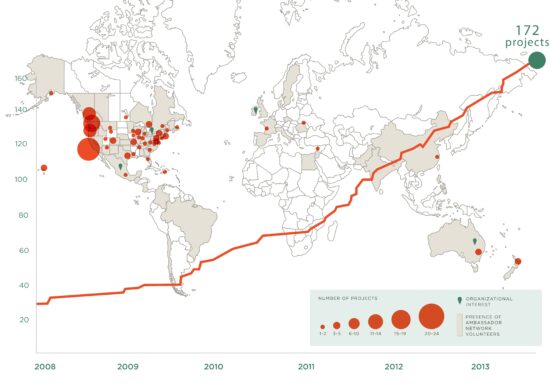
In regards to why this Net Positive conference focused on energy and water, Mr. McLennan referenced a statistic about California spending 25 – 30% of its energy for moving water and sewage around the state, and that 80% of the transported water gets lost through inefficiencies such as evaporation and leaks, etc. These types of inefficiencies also exist at a smaller scale such as cities and buildings. So how can we approach these issues and provide solutions with a global perspective? Here are some of Mr. McLennan’s ideas and calls to action that resonated in my mind:
We want to dive deeper into these issues of energy and water, and show how intertwined they are with each other… We need more elegant and effective solutions… and how can we apply the best technologies and strategies to those elegant solutions?
Our job is to show people that we can create abundance in a constrained world; provide elegant solutions in different types of markets and do it with scale…and use the scale that is right for the solution.
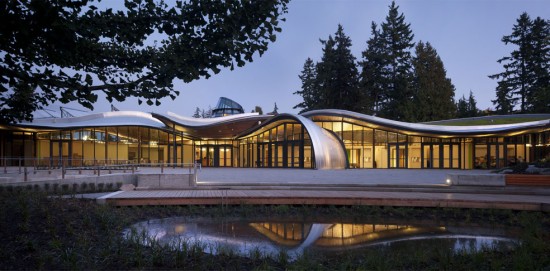
As a follow up to those thoughts, Mr. McLennan showed us some beautiful solutions expressed in the form of green and sustainable buildings that are undergoing the Living Building Challenge as well as those that have been certified as Net Zero Energy. Examples included projects such as the VanDusen Botanical Garden Visitor Centre in Canada, the Omega Center for Sustainable Living and Hawaii Preparatory Academy Energy Lab in the U.S., and the University of Wollongong Sustainable Buildings Research Centre in Australia. In addition to challenging architects and builders to push the boundaries in creating ultra-sustainable buildings, the Living Building Challenge might also be able to help chip away at the misconception that green buildings look odd and unattractive. According to the Living Building Challenge,
[it] envisions designs that elevate our spirits… The intent of the Beauty Petal [one of the certification imperatives], is to recognize the need for beauty as a precursor to caring enough to preserve, conserve, and serve the greater good.
In the words of architect/thought leader Mr. William McDonough,
Isn’t that something?
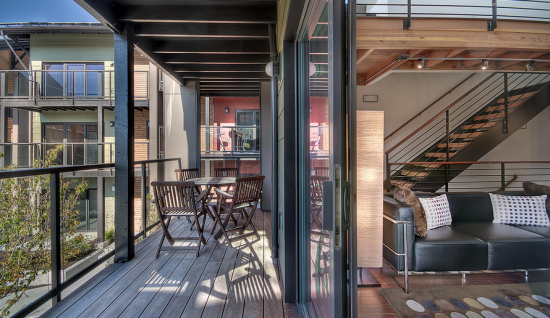
The last keynote speaker, Ms. Maude Barlow, brought to the conference much energy, but also a strong sense of urgency. Her update on the grim, global state of water underscored the reason why we were all at the conference and why it was critical for us to create net positive energy and water buildings while we strived for a more sustainable future. As a former Senior Advisor on Water to the 63rd President of the United Nations General Assembly and a major contributor to getting United Nations to recognize water as a human right in 2010, Ms. Barlow gave us a call to action for redefining the new water ethic in this current global condition of dwindling aquifers and unsustainable treatment of water. How can we as architects, builders, owners, and problem solvers minimize the water impact of our buildings? (A future article will have further in-depth coverage of Ms. Barlow’s speech.)

Following the 2014 Net Positive Energy and Water Conference, there is much for us to do. Every one of the keynote speakers and panelists have inspired me to step it up and the spread the word even more. Details from the individual sessions (Lessons Learned from Net Zero Energy Certified Projects, Emerging Technologies in Net Zero Energy Buildings, and Lessons Learned from Net Zero Water Case Studies) will be shared in future articles. To conclude this article I would like to quote Mr. Denis Hayes from his message titled “Better, Faster, More, Toward Sustainable Cities”:
The green building movement has made impressive progress around the world. But we are moving far too slowly and too incrementally in light of the challenges facing our planet. If we had 100 years to figure out the climate crisis, species extinction, or the buildup of toxic chemicals, the need would be less urgent. But we do not have 100 years, or even 20 years.
The next conference organized by the International Living Future Institute is the 7th Annual unConference, Living Future 2014. It will take place on May 21-23 in Portland, Oregon in the U.S. and feature Ms. Maya Lin, Mr. Jay Harman, and Mr. Jason McLennan. Further registration details can be had at Living Future’s registration page.


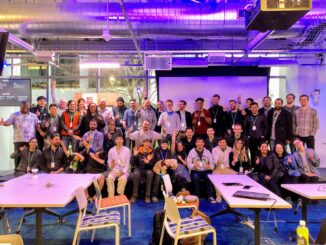
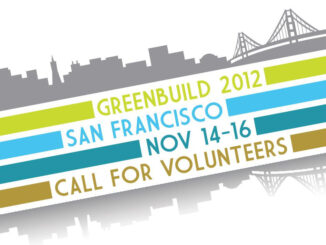
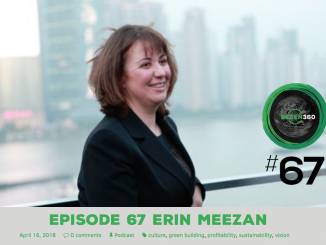
Be the first to comment